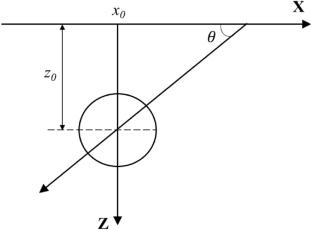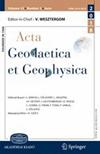Inversion of self-potential data by a hybrid DE/PSO algorithm
Abstract
The aim of this work is to investigate whether retrieving the model parameters of self-potential (SP) anomalies using a combination of differential evolution (DE) and particle swarm optimization (PSO) is possible. This approach hybridizes DE and PSO in a parallel way. Each algorithm is self-contained and obtains a [premature] solution after a user-defined generation number. This hybrid algorithm (DE/PSO) selects the best individual in DE and PSO populations and carries it to the next iteration. Cooperation of DE and PSO can significantly improve the results. Simulations through noise-free synthetic anomalies show that the DE/PSO hybrid algorithm is successful in providing more accurate solutions than those obtained using each single metaheuristic. The algorithm also speeds up the rate of convergence to get the optimum solution. We implemented the algorithm in R programming environment using available metaheuristics packages. Then, the reliability of the code was investigated using some mathematical test functions having two and higher dimensions (unknowns). The performance of the hybrid to invert SP anomalies was tested by synthetic and field data sets. The true model parameters were well-recovered from synthetic data sets including noise-free and noisy data. In the tests with field data, SP anomalies over a shallow ore deposit in Süleymanköy (Türkiye), a deep ore deposit in Arizona (USA), and multiple sources of graphite deposits in KTB borehole site (Germany) were inverted. Low misfit values between the observed and calculated SP anomalies were obtained during the test studies.


 求助内容:
求助内容: 应助结果提醒方式:
应助结果提醒方式:


